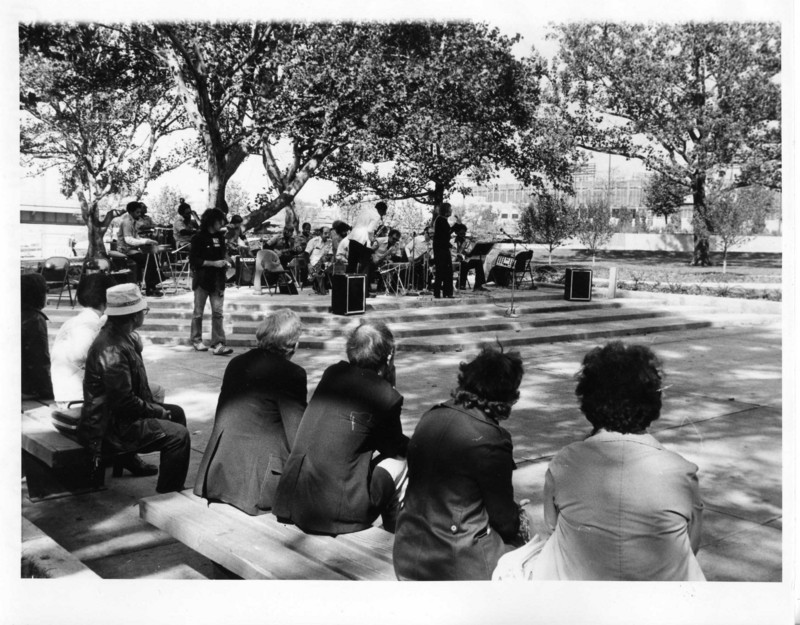
As the Cuyahoga County Courthouse was being built on Lakeside Avenue in 1912, no use had been determined for the small plot of land which lay to the west. For many years different ideas were tossed around. One was for a probate court, which was never built. Another idea came from the Early Settlers Association. The Association was looking for a place to build a replica of Fort Huntington, and they knew the original site was near the empty plot of land. It was not until 1937 that the Early Settlers Association dedicated the land as Fort Huntington Park. The park was simple with only a few trees, an urn and an old cannon in the middle. Several times the association discussed reconstructing the fort, but the plan never materialized.
Over the years the park served as a memorial to Fort Huntington, but became overgrown and neglected. The city attempted several times to use it for its own building needs such as a parking lot or a jail. Each time the Early Settlers Association protested and it remained a park.
In 1977, the city decided to revitalize the park. It put up $75,000 for a complete restoration in time for the 40th anniversary of the first dedication. The plans were a source of contention between the city and the Early Settlers Association. The designer, Berj A. Shakarian, and the council favored a design which reflected the Courthouse next door and its history. The Early Settlers Association insisted on the continued memorialization of Fort Huntington. It had been determined that Fort Huntington actually stood about 500 feet northwest of the park, part of the reason the city favored a redesign. Despite the Association's protests, Shakarian's design was put into action. New walkways, benches, a stage, and plants were added. The park commemorated Fort Huntington in name only.
Over the next 30 years, the park would also see the additions of many other new features. In the 1980s the statue of Jesse Owens was added to the southwest corner. In 1991, the Commodore Perry statue was moved from its location in Gordon Park on the south end of Huntington Park. Two years later in 1993, the Greater Cleveland Peace Officers Memorial would be dedicated in the north end of the park. Around 2004, the John T. Corrigan memorial would replace the area on the west end of the park where a stage had once been placed during the revitalization. The park is now a place for remembering Cleveland heroes of many different time periods and and distinctions.
Images








